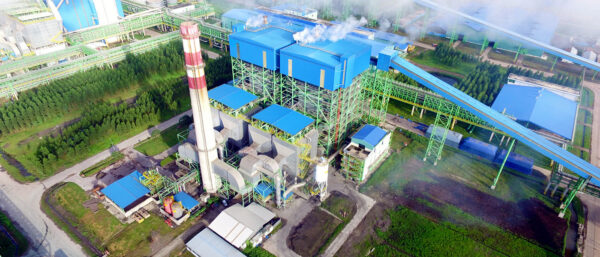As a result of the peak rectification techniques used in power supplies, harmonic currents are generated. To limit these harmonics, legislation has been introduced. The relevant standard is EN61000-3-2 for equipment with an input current ≤16 A per phase.
EN61000-3-2 establishes four classes of equipment, each with their own limits for harmonic emissions.
Class D – T.V.’s, personal computers & monitors consuming ≤600 W
Class C – Lighting equipment
Class B – Portable tools
Class A – Everything else
Equipment Classes A & B have absolute limits for harmonics whatever the input power, Class C equipment has limits expressed as a percentage of the 50 Hz current consumed and for Class D equipment the harmonic current limits are proportional to the mains power consumed. Equipment categorized in Classes C & D will normally require a power supply incorporating active power factor correction.
In the diagram below right, the incoming AC voltage wave form is identified as VLINE, the dotted line represents the rectified AC voltage following the bridge rectifier.
The bulk capacitor is charged during the conduction angle and is discharged slowly by the power stage of the power supply (VCAP). As soon as the input sine wave voltage falls below the bulk capacitor voltage then the diode in the bridge rectifier is reverse biased and no current flows until the incoming rectified sine wave is once again higher than the bulk capacitor voltage. The conduction angle is typically 2-3 ms.

The complex input current waveform generates the harmonics which are of concern to the power generator. The harmonics contribute to the apparent power. Real power and apparent power are discussed later in more detail. The current wave form shown will result in a power factor of around 0.5 – 0.6.

Why is Harmonic Distortion a Problem?
The utility provider must supply the voltage and all of the current, even though some of the current is not turned into useful output power – See the section entitled Real Power, Apparent Power and Efficiency on page 37 of the Essential Guide to Power Supplied. The provider has no means of charging for the extra current because the power is charged in kWh.
The combined effect of millions of power supplies is to clip the AC voltage because all of the current is drawn at the peak of the sine wave. Power conductors must be sized to carry the extra current caused by the low power factor. Neutral conductors can overheat because they are typically not sized to carry all of the harmonic currents which do not exist for high power factor loads.
Solutions for Power Supplies
In order to meet the legislation for harmonic distortion there are two main solutions available for power supplies:
Passive Power Factor Correction
Passive power factor correction typically involves the addition of a line frequency inductor or resistor into the AC line. The effect of the inductor is to squash the current wave shape as the inductor is a reactive component which resists change in current. The effect of the resistor is to reduce the peak current.
The smoother the current wave-shape the less harmonic distortion will be present.

This is a very simple solution which has some advantages and some disadvantages. It is not really practical in power supplies above 300 W due to the size of the components required to provide adequate inductance at 50/60 Hz and to keep the resistive losses low enough. This solution is not adequate in lighting, personalcomputing or color television applications, but is a viable solution for Class A equipment. The diagram below shows real time measurement of passive power factor correction and the harmonic current levels.
Active Power Factor Correction
Active power factor correction uses a boost converter running at high frequency to electronically control the wave-shape of the input current. The incoming AC voltage is monitored and used as a reference to determine the pulse width of each current pulse of the high frequency switched current.
The current is drawn in a series of pulses at around 100 kHz which equates to 2000 pulses per cycle of the mains voltage.
The low pass EMC filter takes the high frequency element and filters it out so that the current seen by the mains supply is sinusoidal. The system regulates the DC output at approximately 400 VDC. The diagram below shows real time measurement of active power factor correction.


Comparison between Passive and Active Power Factor Correction
Passive Power Factor Correction
Advantages
Simple
Rugged and reliable
Noise (EMI)
Assists filtering
Disadvantages
Heavy and bulky components
AC range switching required
Low power factor
Cannot use multiple PSUs in a system
Active Power Factor Correction
Advantages
High power factor >0.9
Low input current
Universal input
Regulated high voltage bus
Hold up time
Multiple PSUs can be used
Disadvantages
Higher cost
Higher complexity
Higher component count
Lower calculated MTBF


















